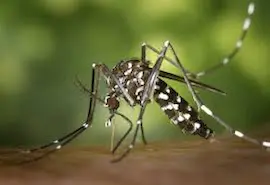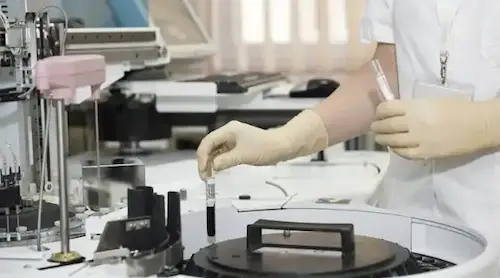1. Temples of Social Justice – Social Justice

Why in News?
A political controversy in Tamil Nadu has emerged over the use of temple surplus funds to construct educational institutions, reigniting a broader debate on:
- State control over religious endowments
- Social justice
- Use of religious wealth for public good
Key Concepts & Issues
1. Tamil Nadu Hindu Religious and Charitable Endowments (HR&CE) Act, 1959
- Empowers the state to administer Hindu religious institutions.
- Allows use of surplus temple funds for public welfare, such as:
- Education
- Healthcare
- Infrastructure
- Justified as aligned with constitutional goals of equity and upliftment of marginalized communities.
2. Self-Respect Movement & Social Justice
- Led by Periyar E.V. Ramasamy in the early 20th century.
- Challenged Brahminical dominance in temples.
- Advocated:
- Equal rights in worship
- Inclusion of marginalized castes in temple management
- Utilization of temple resources for public welfare
Periyar viewed temples not merely as religious spaces but as repositories of social power and wealth that should serve the broader society.
3. Colonial-Era Regulation of Temples
- Madras Regulation VII of 1817 and Religious Endowments Act, 1863:
- Introduced under British rule to curb mismanagement.
- Enabled the state to oversee religious endowments to prevent corruption.
4. Madras HRCE Act, 1951
- Furthered state control by:
- Replacing hereditary trustees with state-appointed officials
- Increasing financial accountability
- Created the foundation for the current Tamil Nadu HR&CE Act, 1959.
Constitutional Provisions Involved
| Article | Provision | Significance |
|---|---|---|
| Article 25(2)(a) | State can regulate or restrict secular activities associated with religious practice. | Justifies use of temple funds for education, health, etc. |
| Article 26 | Right of religious denominations to manage their own affairs in matters of religion. | Supports religious autonomy and non-interference by the state. |
The tension lies in balancing Article 25(2)(a) with Article 26: how much control should the state exert while respecting religious freedom?
Contemporary Debate: Accountability vs. Autonomy
Arguments For State Regulation:
- Ensures transparency and prevents misuse of funds.
- Temple wealth can support social welfare, especially for marginalized groups.
- Supports inclusive development, aligning with Directive Principles of State Policy (DPSP).
Arguments Against State Control:
- Infringes on religious freedom.
- Politicization and bureaucratization of temple administration.
- May alienate devotees and undermine traditional practices.
Suggested Middle Path: Co-Governance
- A hybrid model allowing:
- Spiritual autonomy to religious bodies
- Financial oversight by the state or independent institutions
- Encourages both cultural integrity and social responsibility
Real-World Significance
- Reflects broader debates in India’s secularism model.
- Raises questions on how public interest and religious sentiments can be reconciled.
- Highlights ongoing caste, class, and access issues in temple governance and religious spaces.
Exam Connect – Possible Questions
Prelims
1. Which of the following articles of the Indian Constitution allows the state to regulate secular activities associated with religious practice?
A. Article 21
B. Article 25(2)(a)
C. Article 29
D. Article 26
Answer: B. Article 25(2)(a)
2.The Self-Respect Movement in Tamil Nadu was primarily aimed at:
A. Establishing a separate Dravidian nation
B. Promoting Sanskrit education
C. Challenging caste-based oppression and Brahminical dominance
D. Abolishing religious institutions
Answer: C. Challenging caste-based oppression and Brahminical dominance
Mains
1. “The management of religious endowments must balance religious autonomy with public accountability.”
Critically examine this statement in the context of the Tamil Nadu HR&CE Act and recent debates over the use of temple funds.
2. Discuss the role of the Self-Respect Movement in shaping temple governance and its relevance in contemporary debates on social justice in India.
3. How do constitutional provisions ensure a balance between religious freedom and state intervention? Evaluate with reference to Articles 25 and 26.
2. Chikungunya: A Growing Concern – Science and Technology

Why in News?
- China’s Ministry of Health has launched an emergency campaign to control Chikungunya, a mosquito-borne viral disease that is spreading rapidly.
- Highlights rising public health concerns around vector-borne diseases globally.
What is Chikungunya?
- Chikungunya is a viral disease caused by the Chikungunya Virus (CHIKV).
- It is transmitted to humans by mosquito bites, particularly:
- Aedes aegypti
- Aedes albopictus
These are the same mosquitoes that transmit Dengue and Zika viruses.
Mode of Transmission
| Factor | Description |
|---|---|
| Vector | Female Aedes mosquitoes (especially Aedes aegypti and Aedes albopictus) |
| Transmission type | Vector-borne – NOT contagious between humans |
| Peak biting times | Daytime – early morning and late afternoon |
| Co-infection | Possible with Dengue or Zika due to common vector |
Symptoms
| Common Symptoms | Additional Notes |
|---|---|
| Sudden high fever | Usually lasts 2–7 days |
| Severe joint pain | Can persist for weeks to months, sometimes years |
| Muscle pain, headache | Common with viral infections |
| Nausea, fatigue, rash | Often mistaken for dengue or Zika |
| Chronic arthritis (rare cases) | Can occur post-infection, especially in elderly |
| Complications | Rare; mostly affects elderly, infants, or those with comorbidities |
Chikungunya can be misdiagnosed due to symptom overlap with dengue and Zika.
Treatment and Prevention
No Vaccine or Antiviral Drug Available
Symptom Management
- Rest and hydration
- Paracetamol or NSAIDs for joint pain and fever
- Avoid aspirin (risk of bleeding, esp. if dengue not ruled out)
Prevention Focus
| Strategy | Description |
|---|---|
| Vector control | Destroy mosquito breeding grounds (stagnant water) |
| Personal protection | Use mosquito nets, repellents, full-sleeved clothing |
| Public awareness | Campaigns to educate people about mosquito prevention |
| Surveillance | Monitor outbreaks and high-risk zones |
Global & Indian Context
- Chikungunya has seen outbreaks in Africa, Asia, Europe, and the Americas.
- In India, major outbreaks occurred in 2006 and subsequent years in states like:
- Kerala
- Tamil Nadu
- Karnataka
- The tropical climate, urban crowding, and poor sanitation in parts of India increase vulnerability.
The disease underscores the importance of urban planning, sanitation, and integrated disease surveillance.
Exam Connect – Possible Questions
Prelims
1. Chikungunya is caused by which of the following?
A. Bacteria
B. Protozoa
C. Virus
D. Fungus
Answer: C. Virus
2. Which mosquito species is primarily responsible for the transmission of Chikungunya?
A. Anopheles gambiae
B. Culex pipiens
C. Aedes aegypti
D. Phlebotomus argentipes
Answer: C. Aedes aegypti
Mains
1. Discuss the challenges posed by emerging vector-borne diseases like Chikungunya in India. What measures can be taken to strengthen public health infrastructure to tackle such outbreaks?
2. Despite recurring outbreaks of mosquito-borne diseases, India struggles with effective vector control. Analyze the systemic gaps and suggest a multi-sectoral approach.
3. Gujarat’s Tribal Genome Sequencing Project – Science and Technology

Why in News?
- Gujarat has launched India’s first Tribal Genome Sequencing Project.
- Aimed at mapping the genetic diversity of tribal populations in the state.
- The project contributes directly to the Genome India Project (GIP) – a national initiative to decode the Indian genome landscape.
Key Highlights
Project Overview
| Aspect | Details |
|---|---|
| Announced in | Gujarat State Budget 2025–26 |
| Duration | 5 years |
| Executing Body | Gujarat Biotechnology Research Centre (GBRC) |
| Target Population | Tribal communities (~1 crore individuals, ~15% of state’s population) |
| Initial Sample Size | 4,158 individuals including 378 trio families |
| Reference Genome | Panel of 2,000 representative samples |
Scientific Objectives and Components
1. Addressing Genetic Underrepresentation
- Previous tribal genomic data from Gujarat was minimal (only ~100 samples).
- This project aims to fill the gap and create a more inclusive national genomic database.
2. Data Collection
- Biological samples: Blood, stool
- Lifestyle data: Physiological, genealogical, and behavioral information
Including diverse data sources improves accuracy in gene–trait mapping.
3. Gene–Trait Mapping Applications
- Investigating links between genetic traits and skills (e.g., agility, archery)
- Useful for:
- Sports science
- Anthropology
- Behavioral genomics
4. Precision Medicine Goals
- Early detection of genetic disorders:
- Sickle Cell Anemia
- G6PD Deficiency
- BRCA-linked Cancers
- Promotes personalized healthcare for tribal communities
Genomic Technology & Methodology
| Component | Description |
|---|---|
| SNP Genotyping | Filters out closely related samples to reduce bias |
| Whole Genome Sequencing (WGS) | Applied to 2,000 diverse samples |
| Technology Used | Illumina NovaSeq 6000 |
| Data Security | Double encryption to protect privacy and ensure anonymity |
SNP (Single Nucleotide Polymorphism) genotyping helps identify minor variations in DNA that affect traits or disease susceptibility.
Link to National Project: Genome India Project (GIP)
About GIP
| Attribute | Details |
|---|---|
| Launched in | January 2020 |
| By | Department of Biotechnology (DBT), Ministry of Science & Technology |
| Type | Multi-institutional consortium |
| Purpose | Decode genetic variations across Indian ethnic groups |
Key Objectives of GIP
- Build SNP-based haplotype reference panels
- Map ethnic and regional diversity
- Create biobanks of Indian DNA for:
- Future research
- Disease diagnostics
- Drug development
Achievements So Far
| Metric | Detail |
|---|---|
| Samples Sequenced | 10,074 Indian genomes |
| Ethnic Groups Covered | 99 |
| Data Storage | Indian Biological Data Centre (IBDC), Faridabad |
| Outcomes | Rare trait identification; improved diagnostics |
Relevance & Applications
Health Equity
- Enables targeted healthcare for underrepresented tribal populations.
- Addresses genetic predispositions to specific diseases.
Research & Development
- Facilitates ethnogenomics and understanding of human evolution.
- Helps in drug response studies and identifying population-specific therapies.
Ethical Governance
- Data privacy protocols (double encryption) set standards for ethical genomic research.
Exam Connect – Possible Questions
Prelims
1.The Gujarat Tribal Genome Sequencing Project primarily aims to:
A. Enhance agricultural productivity using gene editing
B. Map genetic data of tribal communities for health and research
C. Identify criminals using genetic databases
D. Sequence viral genomes in tribal regions
Answer: B. Map genetic data of tribal communities for health and research
2. What is the role of SNP genotyping in genomic research?
A. To completely decode the mitochondrial genome
B. To filter out samples based on social characteristics
C. To identify small genetic variations across individuals
D. To prevent ethical misuse of genetic samples
Answer: C. To identify small genetic variations across individuals
Mains
1. The Tribal Genome Sequencing Project in Gujarat marks a significant step towards inclusive health genomics in India. Discuss its potential impact on healthcare and policy planning.
2. How does the Genome India Project contribute to precision medicine and genetic research in India? What are the ethical challenges associated with large-scale genomic data collection?
4. India’s Soil Crisis and the Need for Nutritional Agriculture – Environment

Why in News?
Despite remarkable strides in achieving food security, India faces a critical soil health crisis. This threatens not just agricultural productivity but also the nutritional quality of food, leading to persistent malnutrition.
Key Highlights
From Food Deficit to Food Surplus
| Year | Key Milestones |
|---|---|
| 1960s | India depended on food aid (e.g., PL-480 aid from the USA) |
| 2024–25 | India exported 20.2 million tonnes of rice |
| Present | Operates PMGKY, the world’s largest food distribution program |
PM-Garib Kalyan Yojana (PMGKY)
- Provides free food grains to over 800 million people
- Focuses on caloric sufficiency, but not necessarily nutritional adequacy
Persistent Malnutrition
NFHS-5 Data (National Family Health Survey)
- Stunted children (<5 years): 35.5%
- Underweight children (<5 years): 32.1%
Despite food sufficiency, these figures reveal a nutritional deficit rather than a caloric one.
Soil Health Crisis: A Root Cause
Soil Health Card Scheme Insights:
| Nutrient | Adequate in Samples (%) |
|---|---|
| Nitrogen | < 5% |
| Organic Carbon | ~20% |
- Indicates widespread micronutrient deficiency in Indian soils.
- Leads to crops deficient in iron, zinc, vitamin A, and other essential nutrients.
Fertilizer Imbalance
| State | Observation |
|---|---|
| Punjab, Telangana | Excess nitrogen use, deficiency in potassium and other micronutrients |
Excess use of nitrogen-based fertilizers like urea depletes other soil nutrients and disrupts nutrient balance.
Environmental Impact of Soil Mismanagement
Inefficient Fertilizer Use:
- Only 35–40% of nitrogen is absorbed by plants.
- Rest contributes to:
- Greenhouse gas emissions (especially nitrous oxide)
- Groundwater contamination (nitrate leaching)
- Eutrophication of water bodies
Environmental and health risks make soil restoration a critical agenda for sustainable development.
The Imperative for Nutritional Agriculture
Paradigm Shift Needed:
- Move from yield-maximization to nutrient-rich agriculture
- Focus on:
- Soil rejuvenation
- Bio-fertilizers & composting
- Customized nutrient application based on soil type
Recommended Actions:
| Strategy | Objective |
|---|---|
| Customized nutrient planning | Avoid blanket fertilizer use; based on soil test results |
| Integrated Nutrient Management (INM) | Combine organic, chemical, and bio-fertilizers |
| Agroecology & Crop Rotation | Improve soil health and micronutrient content in crops |
| Farmer awareness programs | Encourage balanced and informed fertilizer use |
Broader Significance
| Area | Implication |
|---|---|
| Public Health | Better soil = More nutritious food = Reduced malnutrition |
| Economic | Long-term productivity; reduced dependence on chemical inputs |
| Environmental | Mitigates soil degradation, groundwater pollution, and GHG emissions |
| Policy | Aligns with National Mission on Sustainable Agriculture (NMSA) and SDG-2 (Zero Hunger) |
Exam Connect – Possible Questions
Prelims
1. What is the primary objective of the Soil Health Card Scheme?
A. To ensure food distribution to marginal farmers
B. To provide information about seed quality
C. To recommend appropriate nutrients for different soil types
D. To distribute organic fertilizers
Answer: C. To recommend appropriate nutrients for different soil types
2. Which of the following is a direct consequence of excessive nitrogen use in agriculture?
1.Groundwater contamination
2.Increase in soil potassium levels
3.Greenhouse gas emissions
4.Improvement in micronutrient content
A. 1 and 3 only
B. 1 and 2 only
C. 2 and 4 only
D. 1, 3 and 4 only
Answer: A. 1 and 3 only
Mains
1. Despite India’s food sufficiency, malnutrition remains widespread. Discuss the role of soil health in achieving nutritional security.
2. “Healthy soil is the foundation of a healthy nation.” Examine this statement in the context of India’s agricultural practices and environmental concerns.
3. Analyze the ecological and economic impact of fertilizer overuse in India. Suggest sustainable alternatives for soil nutrient management.
5. Indian Army’s AI Roadmap for Ops by 2026–27 – Defence & Security
Why in News?
- The Indian Army has unveiled a detailed strategy to integrate Artificial Intelligence (AI), Machine Learning (ML), and Big Data Analytics into its military operations by 2026–27.
- The goal is to enhance operational effectiveness, battlefield awareness, and decision-making speed across tactical and strategic levels.
Key Focus Areas of the AI Roadmap
| Domain | Application |
|---|---|
| Drone Swarming | Autonomous drone teams for surveillance, targeting, or attack |
| Battlefield Surveillance | Real-time data processing from UAVs, satellites, and sensors |
| Combat Simulations | AI-driven training environments for soldiers |
| Information Warfare | Social media monitoring, psychological operations, cyber ops |
| Data-Driven Decisions | Faster decisions using integrated battlefield data systems |
Operational Benefits of AI in Defence
1. Faster, Smarter Decisions
- AI enables real-time situational awareness using data from various sources (drones, sensors, radars).
- Commanders can make rapid, data-informed decisions, improving mission outcomes.
2. Force Multiplication
- AI allows:
- Autonomous reconnaissance and logistics operations
- Enhanced resource optimization
- Reduced reliance on manpower in hazardous or repetitive tasks
3. Risk Reduction
- AI-powered mine-clearing robots and recon drones reduce human exposure to life-threatening situations.
4. Cost-Effectiveness & Scalability
- AI solutions (e.g., software, drone systems) are relatively inexpensive, modular, and easy to upgrade.
- Promotes long-term affordability in defence procurement.
5. Precision Targeting
- AI systems can analyze vast data for accurate targeting, reducing:
- Collateral damage
- Civilian casualties
- Operational error
6. Strategic Wargaming & Deterrence
- AI allows simulation of combat scenarios to:
- Test different strategies
- Improve readiness
- Enhance strategic foresight
Key Risks and Challenges
| Risk Area | Concern |
|---|---|
| Loss of Human Control | Autonomous systems may act unpredictably in dynamic combat settings |
| Cybersecurity Threats | AI systems may be hacked, spoofed, or misdirected |
| Unintended Harm | AI may misclassify civilian targets due to flawed algorithms |
| Bias and Misuse | Poor data quality can lead to discriminatory or unethical outcomes |
| Global AI Arms Race | Unregulated AI development may cause strategic instability |
AI in warfare raises serious ethical, legal, and doctrinal questions about control, responsibility, and escalation.
Implementation Plan
Key Elements
- Short-Term Goals:
- Deploy AI for real-time battlefield monitoring
- Tools: Text summarizers, chatbots, multi-sensor data fusion platforms
- Medium-Term Goals:
- Integrate AI into legacy and new combat platforms
- Collaboration Model:
- Partnerships with private defence firms, AI startups, and academic institutions under frameworks like iDEX (Innovations for Defence Excellence)
Strategic Significance for India
| Dimension | Importance |
|---|---|
| Modernization | Keeps India at pace with countries like the US, China, and Israel |
| Border Security | AI can help monitor LAC, LOC, and maritime boundaries effectively |
| Counter-Insurgency | Data analytics can aid in early threat detection in volatile regions |
| Atmanirbhar Bharat | Fosters domestic defence innovation and self-reliance in critical tech |
Exam Connect – Possible Questions
Prelims
1. Which of the following is not a benefit of AI in military operations?
A. Real-time battlefield awareness
B. Enhanced human reaction time
C. Improved target precision
D. Strategic scenario simulation
Answer: B. Enhanced human reaction time
(AI improves decision-making speed but doesn’t directly enhance human reflexes.)
2.What is drone swarming in military technology?
A. Using a single large drone for logistics
B. Deploying multiple drones in coordinated missions
C. Controlling drones using manual remote controls
D. Launching chemical weapons via aerial drones
Answer: B. Deploying multiple drones in coordinated missions
Mains
1. Discuss the opportunities and challenges of integrating Artificial Intelligence into India’s defence architecture. What steps should be taken to ensure ethical and secure implementation?
2. “AI is the next frontier in strategic deterrence.” Evaluate this statement in the context of India’s defence modernization and global security dynamics.
3. Critically examine the risks associated with the use of autonomous systems in military operations. How can these be mitigated through national and international frameworks?
6. Piezo-Photocatalytic Water Filter – Science and Technology

Why in News?
Indian researchers from INST Mohali, IIT-Dharwad, and IIT-Kharagpur have developed a cost-effective, eco-friendly, and reusable water filter that removes toxic industrial dyes using a novel piezo-photocatalysis technique.
This innovation supports India’s goals of sustainable water management, green technology, and the Namami Gange initiative.
Scientific Overview
What is Piezo-Photocatalysis?
Piezo-photocatalysis is a hybrid process combining:
- Photocatalysis (using light energy)
- Piezoelectric effect (using mechanical vibrations)
It enables pollutant breakdown in both light and dark conditions.
Working Mechanism
| Component | Function |
|---|---|
| 3D-printed PLA sheets | Structural base; biodegradable and eco-friendly |
| Bismuth Ferrite (BFO) nanoparticles | Catalyst that enables piezoelectric and photocatalytic reactions |
Dual-Mode Operation:
- Photocatalysis:
- Utilizes sunlight to break down complex dye molecules.
- Light excites electrons in BFO nanoparticles, producing reactive oxygen species (ROS) that degrade pollutants.
- Piezoelectric Effect:
- Mechanical vibrations (e.g., ultrasound, water flow) create electric charges in BFO nanoparticles.
- These charges enhance dye degradation even without sunlight.
Performance Highlights
| Dye Tested | Removal Rate (within 90 mins) | Notes |
|---|---|---|
| Congo Red | 99% | Highly efficient |
| Methylene Blue | 74% | Still effective |
| Reusability | Up to 5 cycles | Only 3% drop in efficiency |
This makes the filter practical and sustainable for real-world use.
Environmental and Technological Significance
Eco-Friendly:
- No harmful chemicals used
- No external electricity required
- Biodegradable materials (PLA)
Cost-Effective:
- Cheaper than traditional treatments like:
- Ozonation
- Chemical oxidation
- Ideal for small industries, rural areas, and developing economies
Green Energy Use:
- Operates on solar energy and mechanical vibrations
- Reduces carbon footprint and dependence on fossil fuels
Application Potential
| Sector/Application | Benefit |
|---|---|
| Textile Industry | Treatment of dye-contaminated wastewater |
| Namami Gange Initiative | Supports river cleanup through decentralized filtration solutions |
| Smart Villages/Microgrids | Can be deployed without grid electricity access |
| Aatmanirbhar Bharat | Promotes indigenous, scalable, and sustainable innovation |
This solution bridges the gap between lab innovation and field application in environmental technology.
Exam Connect – Possible Questions
Prelims
Which of the following best describes “piezo-photocatalysis”?
A. Use of microbes to clean polluted water
B. Use of mechanical pressure and light to degrade pollutants
C. Use of ozone and UV rays to treat water
D. Use of reverse osmosis under sunlight
Answer: B. Use of mechanical pressure and light to degrade pollutants
2. Which biodegradable material was used in constructing the newly developed Indian water filter?
A. Polyethylene
B. Polylactic acid (PLA)
C. Polyvinyl chloride (PVC)
D. Polypropylene
Answer: B. Polylactic acid (PLA)
Mains
1. Discuss the role of innovations like the piezo-photocatalytic water filter in promoting sustainable water purification in India. How can such technologies support government initiatives like Namami Gange and Aatmanirbhar Bharat?
2. Evaluate the environmental benefits and practical challenges of deploying decentralized water purification technologies in rural and industrial areas.

